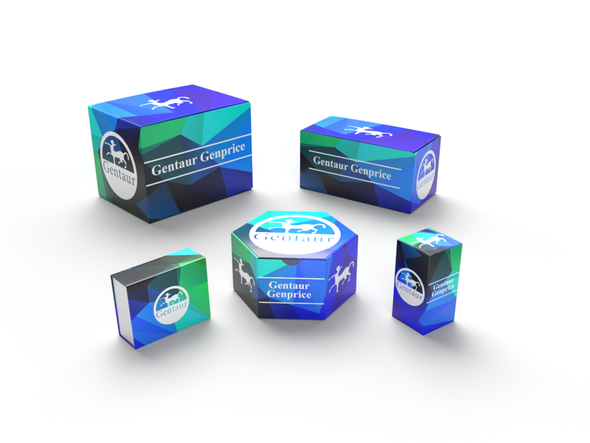749
Human Complement fragment 4b (C4b) ELISA Kit | KTE62582
- SKU:
- 749-KTE62582
- Availability:
- Usually ships in 5 working days
Description
Human Complement fragment 4b (C4b) ELISA Kit | KTE62582 | Gentaur UK, US & Europe Distribution
Application: This Human Complement fragment 4b (C4b) ELISA Kit employs a two-site sandwich ELISA to quantitate C4b in samples. An antibody specific for C4b has been pre-coated onto a microplate. Standards and samples are pipetted into the wells and anyC4b present is bound by the immobilized antibody. After removing any unbound substances, a biotin-conjugated antibody specific for C4b is added to the wells. After washing, Streptavidin conjugated Horseradish Peroxidase (HRP) is added to the wells. Following a wash to remove any unbound avidin-enzyme reagent, a substrate solution is added to the wells and color develops in proportion to the amount of C4b bound in the initial step. The color development is stopped and the intensity of the color is measured.
Detection Method: Colorimetric
Conjugate: N/A
Sample Type: Cell culture supernatants#Serum#Plasma#Other biological fluids
Assay Type: Multiple steps standard sandwich ELISA assay with a working time of 3-5 hours. It depends on the experience of the operation person.
Kit Component: • Human Complement fragment 4b microplate
• Human Complement fragment 4b standard
• Human Complement fragment 4b detect antibody
• Streptavidin-HRP
• Standard diluent
• Assay buffer
• HRP substrate
• Stop solution
• Wash buffer
• Plate covers
Features & Benefits: Human Complement fragment 4b (C4b) ELISA Kit has high sensitivity and excellent specificity for detection of Human C4b. No significant cross-reactivity or interference between Human C4b and analogues was observed.
Calibration Range: Please inquire
Limit Of Detection: Please inquire
Usage Note: • Do not mix components from different kit lots or use reagents beyond the kit expiration date.
• Allow all reagents to warm to room temperature for at least 30 minutes before opening.
• Pre-rinse the pipet tip with reagent, use fresh pipet tips for each sample, standard and reagent to avoid contamination.
• Unused wells must be kept desiccated at 4 °C in the sealed bag provided.
• Mix Thoroughly is very important for the result. It is recommended using low frequency oscillator or slight hand shaking every 10 minutes.
• It is recommended that all samples and standards be assayed in duplicate or triplicate.
Storage Instruction: The unopened kit should be stored at 2 - 8°C. After opening, please store refer to protocols.
Shipping: Gel pack with blue ice.
Precaution The product listed herein is for research use only and is not intended for use in human or clinical diagnosis. Suggested applications of our products are not recommendations to use our products in violation of any patent or as a license. We cannot be responsible for patent infringements or other violations that may occur with the use of this product.
Background: The complement system is a part of the immune system that enhances (complements) the ability of antibodies and phagocytic cells to clear microbes and damaged cells from an organism, promotes inflammation, and attacks the pathogen's plasma membrane. It is part of the innate immune system, which is not adaptable and does not change over the course of an individual's lifetime. It can be recruited and brought into action by the adaptive immune system. The complement system consists of a number of small proteins found in the blood, in general synthesized by the liver, and normally circulating as inactive precursors (pro-proteins) . When stimulated by one of several triggers, proteases in the system cleave specific proteins to release cytokines and initiate an amplifying cascade of further cleavages. The end result of this complement activation or complement fixation cascade is stimulation of phagocytes to clear foreign and damaged material, proxy inflammation to attract additional phagocytes, and activation of the cell-killing membrane attack complex. Over 30 proteins and protein fragments make up the complement system, including serum proteins, serosal proteins, and cell membrane receptors. They account for about 10% of the globulin fraction of blood serum and can serve as opsonins. Three biochemical pathways activate the complement system: the classical complement pathway, the alternative complement pathway, and the lectin pathway.
Alternative Names: C4b
Search name: C4b
Tag: C4b






